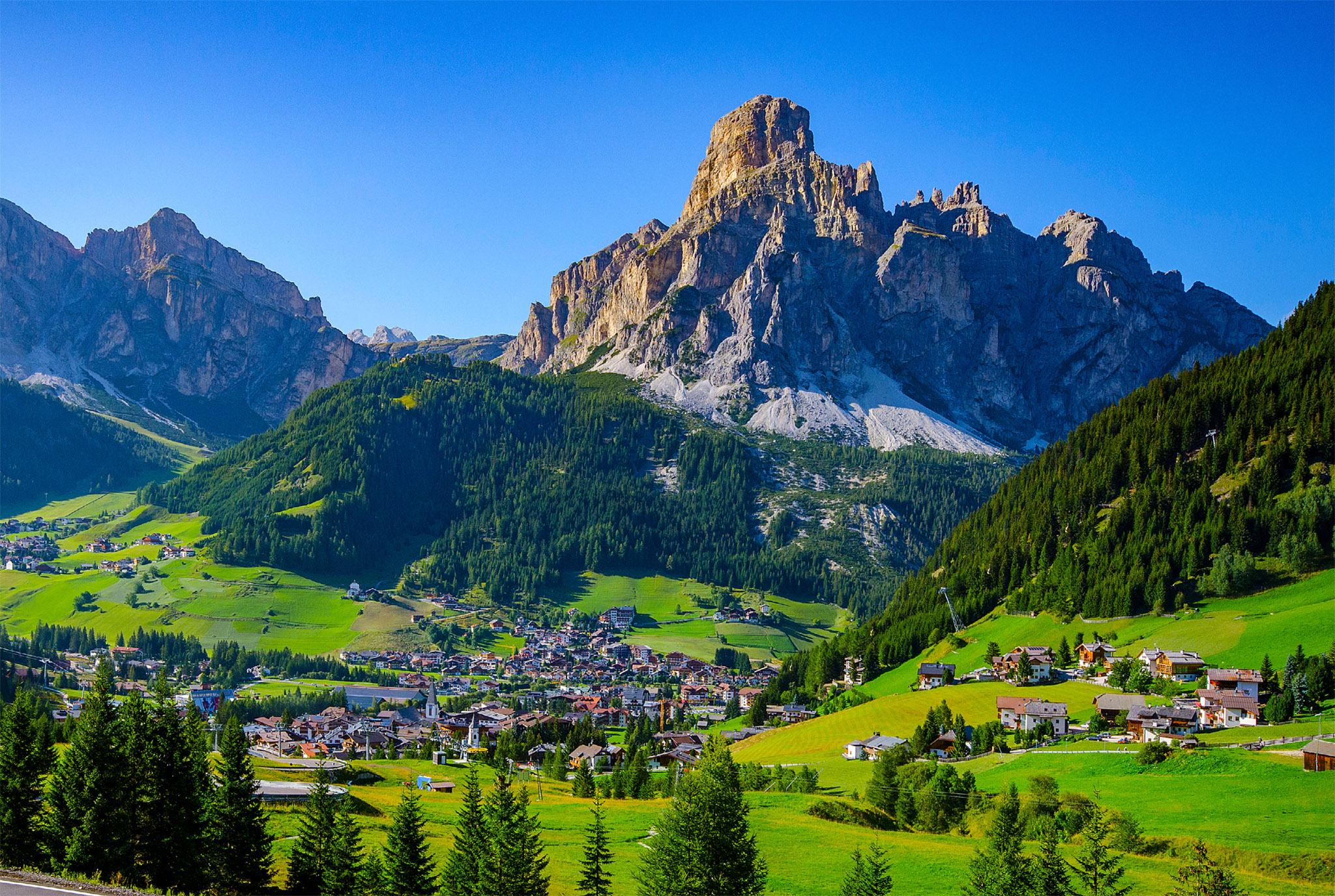
t The Alpine village of Corvara during the summer
Six Italian regions touch the Alps: Aosta Valley, Piedmont, Lombardy, the Veneto, Trentino, Alto Adige and Friuli Venezia-Giulia. In winter, the mountain peaks are covered with snow, making the area popular with skiers. Come spring, hiking trails cut a swathe through lush green mountain fields to remote villages.

t The Alpine village of Corvara during the summer
Tucked among snow-dusted mountain peaks, this pretty Alpine resort in South Tyrol is best for skiing and cycling holidays. Hotels are welcoming and generally family-run, and there is an excellent selection of mountain restaurants.
Italian ski bunnies head to Cervinia, in the Aosta Valley, for its buzzy après ski, panoramic ski-lifts and 350 km (217 miles) of pistes, which are good for beginner to advanced skiers. It's not the prettiest of resorts, but thanks to its high altitude, it is possible to ski the slopes here until May. It also offers glacier skiing and snowboarding in the summer months to help tide you over until the season starts again in November.
The host of the 2021 Alpine Ski World Championships, Cortina is one of the world's chicest ski resorts. It is best for intermediate to advanced skiers looking for a smart, stylish place to speed down the slopes. It's the sort of place where you'll find the jet-set mingling with the locals at quiet wine bars before retreating to chic hotels. During the summer months, the resort becomes an excellent base for walkers.
Part of the “three valleys” Monterosa region, Champoluc is one of Italy’s best-kept secrets. There are very good red runs, fabulous off-piste terrain and welcoming, uncrowded beginners’ slopes, too. Hotels are family-run, and there’s a charming, rather than rowdy, après-ski scene.
This stylish alpine resort offers excellent on- and off-piste skiing, along with a spirited après-ski scene (lifts run until midnight) and great mountain restaurants. Quaint boutiques and delicatessens line the main street, and there’s a wide variety of very good hotels.
Valle d’Aosta is known for its medieval castles and forts, with many people travelling to the region specifically to visit them. Perhaps the best known is Fènis Castle, which is admired for its architecturally symmetrical towers and turrets. The 14th-century Verres Castle in the Aosta Valley is a striking example of architecture from the Middle Ages, while 19th-century Fort Bard Museum hosts regular art exhibitions and theatre performances.
The Alps are Europe’s youngest mountain range, formed a mere 65 million years ago.